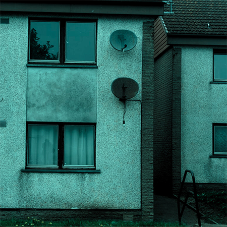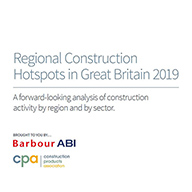The number of planning applications decided and granted has increased during the last 2-3 years, following an ongoing period of decline in the years between 2010 and 2013. In 2015 and 2016, the total number of developments granted increased by 8% and 4% respectively. This growth was driven by the improving economic situation, which has boosted consumer confidence and the market for home improvements, and a requirement to increase living space within the home.

The overall home improvement market has grown in recent years. The trend towards ‘improve, don’t move’ has benefited the home extensions market in particular, as extensions can provide additional living space or accommodate a growing family. This trend has also led to consumers spending more on upgrading their properties, particularly in terms of kitchen, bathrooms and glazing options, but also on flooring, underfloor heating and other elements.
Home extensions – single storey extensions in particular – represent one of the largest and fastest growing sectors of the home improvements market. Approximately 75,000 applications for single storey extensions were granted in 2016, a number which has risen over the last few years. Single storey extensions remain a popular form of home extension, partly because a large proportion no longer require planning permission under permitted development rights.
The number of double storey extensions has also grown, albeit at a slower rate than single storey extensions. In many major cities, especially London, loft and basement extensions are a growing feature of the market. Mainly owing to a lack of space, these extensions often represent a cost-effective method of adding living areas to properties without reducing outdoor space. Multi-level basement extensions have recently become popular, with London alone accounting for up to three-quarters of all basement applications. However, this has led to over-development concerns with some authorities imposing limits to the level of work which can be carried out.
Keith Taylor, Director of AMA Research, commented: “Despite the threats facing the UK housing market, the home extensions sector is expected to experience reasonably good growth over the next few years with home improvements seen as a cost-effective way of achieving greater living capacity and longer-term capital growth. Other drivers include more relaxed rules with regards to permitted development rights. Affordability issues are likely to remain the main barrier to growth, with banks and building societies now requiring additional information relating to borrowers' finances before any lending decision is made, and wage inflation remaining low.”
Although the outlook for the UK economy remains uncertain owing to the recent election results and the EU withdrawal, modest growth is forecast in terms of construction and RMI activity. Activity in the residential RMI sector is expected to continue in the short to medium term, and is forecast to reach £30bn by 2021. The share of residential RMI output taken by building extensions, currently at around 25%, is forecast to continue growing.
The ‘Home Extensions Market Report – UK 2017-2021 Analysis’ report is published by AMA Research, and is available now and can be ordered online at www.amaresearch.co.uk or by calling 01242 235724..
Related Blog Articles











![Residential Sector Market Overview [INSIGHT] Residential Sector Market Overview [INSIGHT]](/20/blogentry/00/05/54/th554.png)

